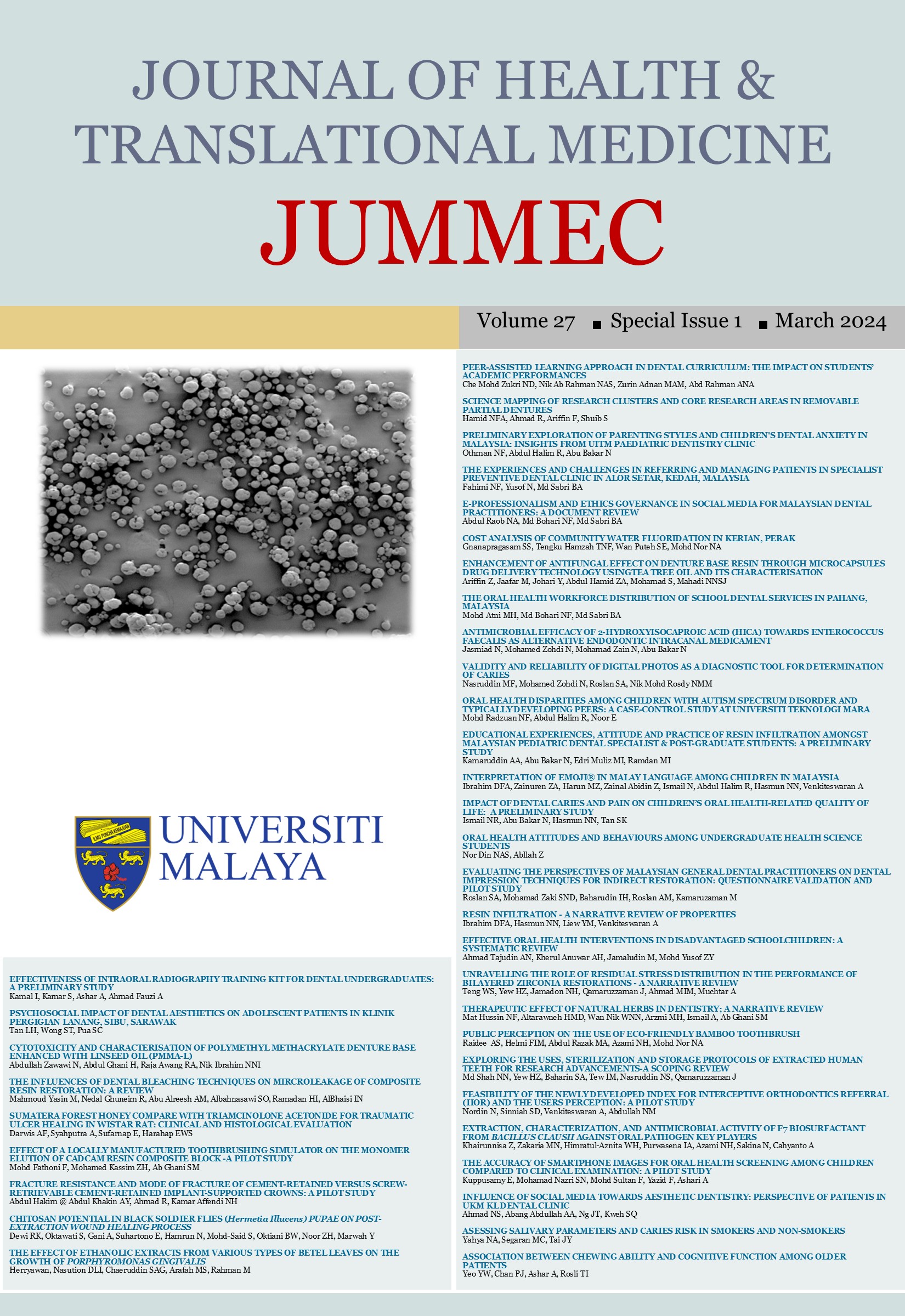CYTOTOXICITY AND CHARACTERISATION OF POLYMETHYL METHACRYLATE DENTURE BASE ENHANCED WITH LINSEED OIL (PMMA-L)
Received 2024-03-01; Accepted 2024-03-22; Published 2024-03-26
DOI:
https://doi.org/10.22452/jummec.sp2024no1.31Abstract
Objectives: Polymethyl methacrylate (PMMA) is a widely used polymer for a denture base material. Dibutyl phthalate was previously utilised as a synthetic plasticiser in PMMA, but concerns about ester leaching have raised awareness of using organic plasticisers, such as linseed oil. The objective of this research was to assess the cytotoxic effects of linseed oil and to characterise the experimental polymethyl methacrylate enhanced with linseed oil (PMMA-L).
Method: The cytotoxicity of linseed oil (LO) was evaluated by exposing Human Gingival Fibroblast (HGF) cells to different linseed oil concentrations (1%, 3%, 5%, 7%, and 10%) for 24, 48, and 72 hours. Afterwards, cell viability was measured with the WST-1 assay, and a spectrophotometer was used for cell quantification. Five groups of PMMA-L were prepared, each containing different percentages of linseed oil (1%, 3%, 5%, 7%, and 10% by weight). These samples underwent an ageing process involving 5,000 cycles of thermocycling between 5°C and 55°C with a 30-second dwell time. Compositional and leaching analyses of PMMA-L were performed using attenuated total reflection fourier-transform infrared spectroscopy (ATR-FTIR).
Results: The results from the WST-1 assay consistently showed cell viability exceeding 95% across all doses and incubation periods, indicating the non-cytotoxicity of LO. Composition analysis revealed that the ATR-FTIR spectra of PMMA-L and linseed oil were identical within the C=C stretching vibration range (1536-1652 cm-1), originating from unsaturated triglyceride compounds found in linseed oil but not in PMMA. Additionally, the leaching analysis did not detect any leaching of linseed oil from PMMA-L.
Conclusions: The research offers proof of the non-cytotoxic nature of linseed oil. Moreover, the successful creation of PMMA-L is evident, as indicated by the incorporation of the linseed oil component in PMMA-L and the absence of linseed oil in the leaching analysis.
Downloads
Downloads
Published
Issue
Section
License
All authors agree that the article, if editorially accepted for publication, shall be licensed under the Creative Commons Attribution License 4.0 to allow others to freely access, copy and use research provided the author is correctly attributed, unless otherwise stated. All articles are available online without charge or other barriers to access. However, anyone wishing to reproduce large quantities of an article (250+) should inform the publisher. Any opinion expressed in the articles are those of the authors and do not reflect that of the University of Malaya, 50603 Kuala Lumpur, Malaysia.


